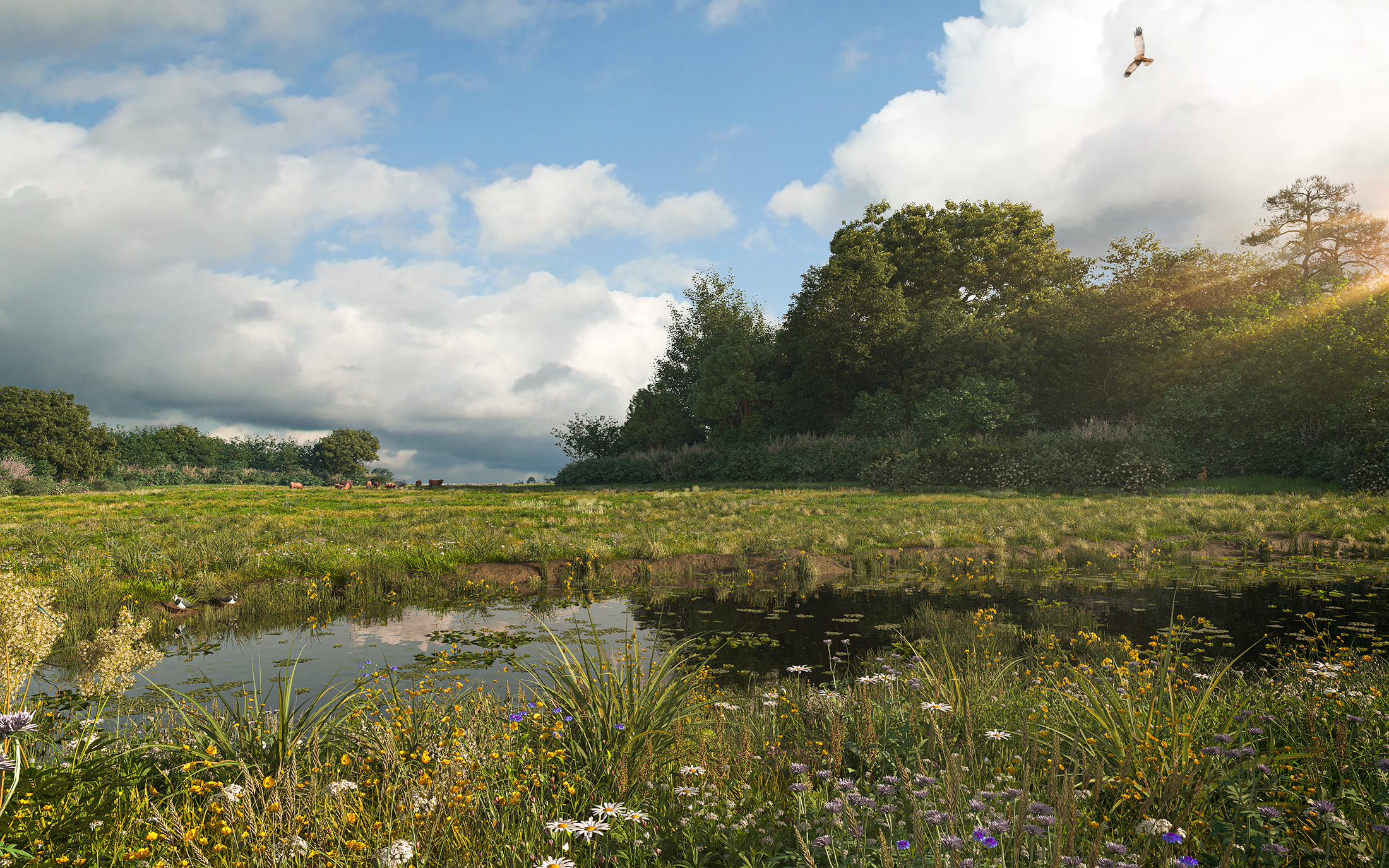BIODIVERSITY NET GAIN
Secondary BNG legislation: the key takeaways
Legislation for Biodiversity Net Gain (BNG) has been laid in parliament and draft secondary guidance has been published as promised.
BNG policy, as mandated by the Environment Act 2021, will help ensure developments leave nature in a better state than before it was built upon. This will be essential for restoring the biodiversity that has been lost in England over the years, rebuilding the vital ecosystems upon which our survival depends.
The government made this announcement alongside additional nature commitments. This includes a £15m support package for protected landscapes, £2.5m to help children access nature, and £750,000 for the recovery of England’s temperate rainforests.
There is no other policy like this in the world, meaning that BNG is setting the blueprint for driving vital nature restoration on a global scale.
Prime Minister Rishi Sunak said:
“We are reasserting the UK’s leading role in promoting our iconic landscapes and keeping nature at the centre of our action to tackle climate change.”
What important legal and practical details were published in the secondary BNG legislation?
The draft secondary legislation has shed some light on certain details of the way BNG policy will be applied once it comes into effect from the beginning of February 2024.
It includes an explanation for what constitutes an ‘irreplaceable habitat’ and how these will be separate from BNG, requiring a case-by-case agreement between developers and LPAs.
It also offers an outline for developers to submit a biodiversity gain plan to their LPA once planning permission has been granted. The LPA will then have eight weeks to respond to this gain plan which, if accepted, will discharge the required BNG planning condition.
Are there any shortcomings in the secondary BNG legislation?
We welcome the introduction of a ‘biodiversity gain hierarchy’ which will enable developers to go straight to off-site solutions for medium and low distinctiveness habitats. However, we are still seeing preference given to on-site rather than off-site BNG from a legislative point of view. It is still unclear how the new biodiversity gain hierarchy will interact with the existing mitigation hierarchy contained in the NPPF.
While it is true that compensation for any ecosystem impacts should be carried out as close to the site of harm as possible, it isn’t the case that on-site restoration is categorically better for either nature or the development.
In fact, on-site BNG delivery might be far more difficult to enforce and could deliver sub-optimal results for nature. We know that in many circumstances, on-site habitat creation could threaten development project viability by significantly restricting developable area, making effective BNG delivery impossible within the red line boundary.
If not done effectively, it will be extremely difficult to guarantee sufficient protection, monitoring, maintenance of on-site BNG habitats – putting developers at risk of breaching their planning agreements.
Large logistical schemes, commercial warehousing, retail buildings, ports facilities, and infrastructure developments can have limited scope to provide biodiversity uplift given that most involve large slabs of concrete and tarmac. With sites like these, access for monitoring can be impractical for safety and security reasons.
If created without ecological expertise, on-site habitats will also remain fragmented and isolated from the wider countryside, making them little more than landscaping schemes with minimal contributions to biodiversity – missing the point of BNG policy entirely.

How will location play a role in the application of BNG policy?
We think it is important that habitat banks serve the local communities in which they operate. This means that they should support local plans and policies. However, we have concerns around regional policy variability, the impact this may have on availability of land for habitat banking, and the reliable cost and supply of biodiversity units for developers who are already under pressure.
We support a consistent and predictable national approach. Therefore, we would welcome further clarity over how local policy making may complement national BNG policy without distorting local markets, constraining land supply, and limiting developers’ options for discharging the general biodiversity gain condition.
What could change in the future for BNG?
We hope to see a more nuanced approach to BNG delivery from the legislation. Of course, priority should always be given to avoiding impact in the first place, but we hope to see changes in how compensation is valued.
Once off-site BNG delivery has clearly demonstrated its effectiveness – it would be prudent for legislation to reflect its success, and place local off-site gains on an equal footing to on-site gains. This would make it far easier for developers to deliver BNG effectively.
Environment Bank’s Founder and Chairman, Professor David Hill CBE, has always been a champion of off-site solutions for nature restoration. Habitat banks allow us to employ the leading ecological principles of creating bigger, better, more joined-up areas for biodiversity. The benefits of off-site delivery are abundant, and we are confident that off-site habitat banks will play a key role in delivering BNG once the legislation comes into effect.

How can Environment Bank provide strategic BNG delivery?
Chartered Planners within our Planning and BNG Delivery team provide expert application support for all types of developments and applications including applications under the Town and Country Planning Act and Nationally Significant Infrastructure Projects (NSIPs). We offer structured BNG consultancy from the very beginning of the development This allows us to provide you with a frictionless, reliable, and cost-effective route through the planning process.
Through tailored planning support, we empower developers to make better-informed decisions – enabling them to reduce ecological impacts and restoration costs from the outset.
We help developers and infrastructure companies understand which habitats they should retain on-site wherever possible – such as those of high distinctiveness, and high mitigation cost – and which habitats can be most effectively mitigated locally off-site.
This approach ensures they protect any particularly valuable habitats and follow the biodiversity gain hierarchy – resulting in a better solution, both ecologically and economically.
We have a well-established pipeline of land continually being secured nationwide and we can prioritise upcoming areas of coverage to align with future development projects.
Our landscape-scale nature restoration sites are strategically located in areas of ecological importance and high development demand. They are all designed in collaboration with LPAs to ensure they are contributing to broader network recovery.
We are ultimately thrilled to see BNG policy come into effect and the publication of secondary legislation is another step in the right direction for nature recovery in England. Now the secondary guidance has been released, developers can begin to develop the required Biodiversity Gain Plans and begin reserving Biodiversity Units required to deliver BNG through off-site Habitat Banks.
To understand in more detail how the new second regulations will impact developers and planners, read our Guide to BNG Regulations.

